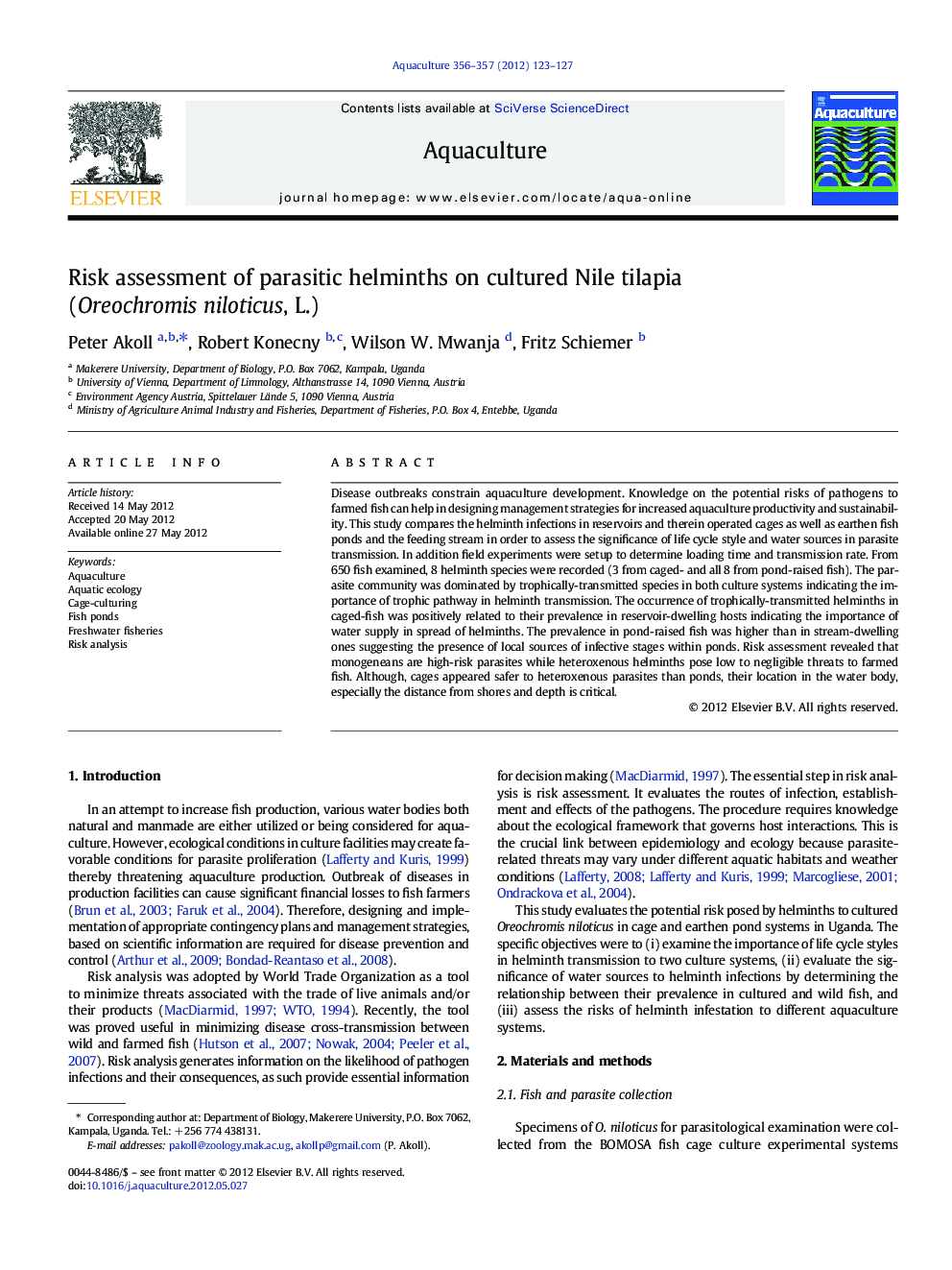| کد مقاله | کد نشریه | سال انتشار | مقاله انگلیسی | نسخه تمام متن |
|---|---|---|---|---|
| 2422556 | 1552888 | 2012 | 5 صفحه PDF | دانلود رایگان |

Disease outbreaks constrain aquaculture development. Knowledge on the potential risks of pathogens to farmed fish can help in designing management strategies for increased aquaculture productivity and sustainability. This study compares the helminth infections in reservoirs and therein operated cages as well as earthen fish ponds and the feeding stream in order to assess the significance of life cycle style and water sources in parasite transmission. In addition field experiments were setup to determine loading time and transmission rate. From 650 fish examined, 8 helminth species were recorded (3 from caged- and all 8 from pond-raised fish). The parasite community was dominated by trophically-transmitted species in both culture systems indicating the importance of trophic pathway in helminth transmission. The occurrence of trophically-transmitted helminths in caged-fish was positively related to their prevalence in reservoir-dwelling hosts indicating the importance of water supply in spread of helminths. The prevalence in pond-raised fish was higher than in stream-dwelling ones suggesting the presence of local sources of infective stages within ponds. Risk assessment revealed that monogeneans are high-risk parasites while heteroxenous helminths pose low to negligible threats to farmed fish. Although, cages appeared safer to heteroxenous parasites than ponds, their location in the water body, especially the distance from shores and depth is critical.
► Assessed the importance of lifecycles and water supply in helminth transmission.
► Determined the risk of helminth infestations in cages and ponds.
► Trophic pathway enhanced parasite transmission than free-living style.
► Local source of infective stages was important for ponds and water supply for cages.
► Monoxenous helminths posed higher risk to culture systems than heteroxenous ones.
Journal: Aquaculture - Volumes 356–357, 1 August 2012, Pages 123–127